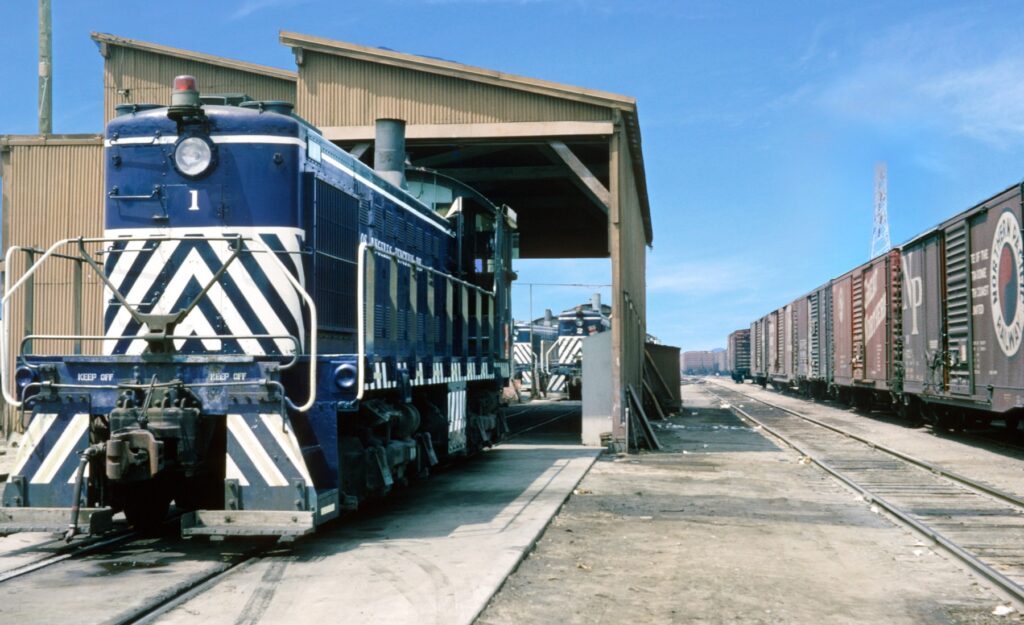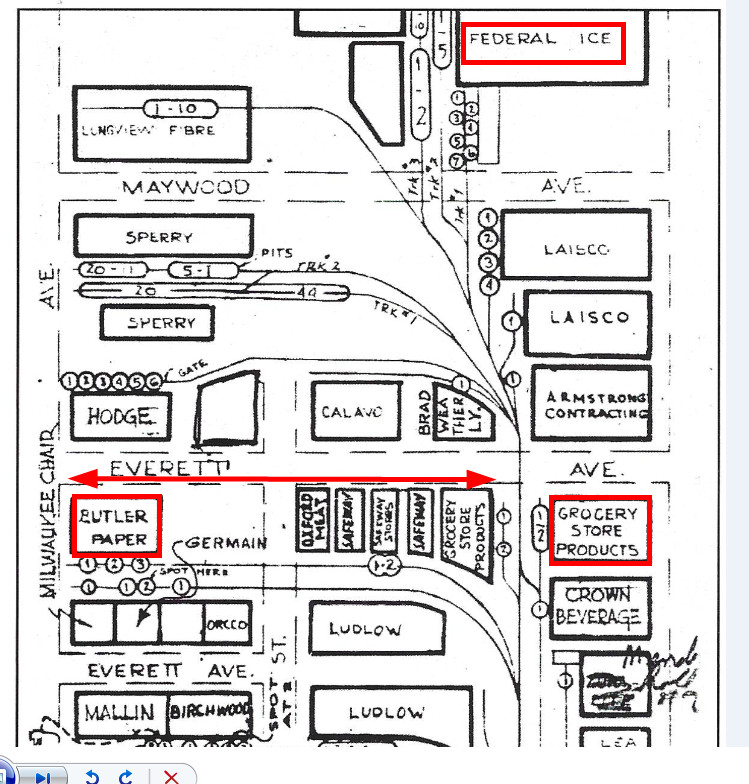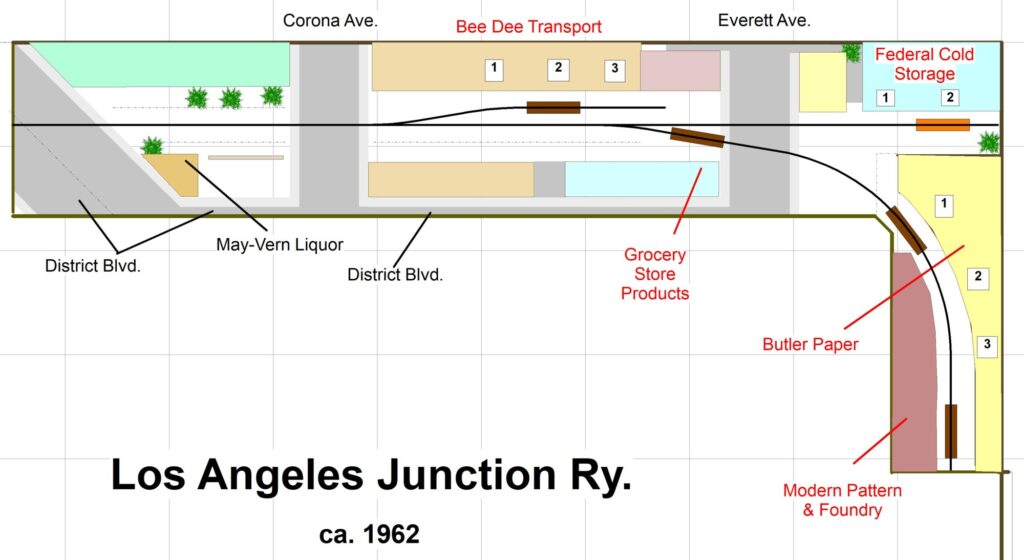
LAJ Alco S-2 #1 basks in the sun awaiting its next assignment. 1964. ebay slide scan. Photographer unknown.
It’s interesting how a little information, often innocuous on the surface, can totally change our perspective and make us realize that our layout offers opportunities we hadn’t considered before. Even better, this expanded view can be realized without any extra construction or re-building. All that’s needed are some label changes on our track plan and an expanded mindset.

This aha moment came after a re-read of the Fall 2003 issue of the Santa Fe Historical Society’s Warbonnet Magazine. The issue contains the most comprehensive deep dive into the LAJ that I’m aware of. Within the article was an LAJ track chart of their Horn Lead, the inspiration for my layout. A few things jumped out at me:
-Notice how many industries are located on a single spur. This affords us the opportunity to greatly expand a layout’s operational possibilities without adding a single turnout or laying an inch of track. Just copy what they do.
-Notice the liberal use of car spot markings. There are a lot more than I would have expected. Again, more operational potential.
-Notice that every…..single…..turnout….every darn one… is oriented the same direction. Apparently, they don’t share the typical model railroader’s view of forced complexity. A switch job leaves the yard, loco up front, crosses District Blvd. and then runs down the Horn Lead ( which I’m guessing is about a mile long). There is a run around siding on the lead so the engine likely runs around the train once he’s cleared District Blvd. At that point, and this is key, the rest of the work can now be done with push-pull moves. There is no need to run around the train ever again. This is another design practice we would do well to emulate.
-The article alludes to the reality that tenants change over time and the charts need to be updated. This is another opportunity for us. We can “change tenants” on our layouts as well and don’t need to even build a new structure.

The track plan above reflects this new perspective. Nothing on the layout has changed other than the labels and how I operate it. The curved lead on the right can now serve three industries and be totally plausible in doing so. I now have five industries total and ten locations to spot cars. I’ve been taking a look at whether I need an extension track to the left of District Blvd. Unless I really went overboard with a car-heavy op. session, I’m probably fine without it, at least for now.
On a final note, I’ve gone back and forth on the proto-freelance vs. pure freelance approach. At least for me, I’ve come to the point of thinking that, as a layout’s size gets smaller, the proto-freelance way seems the common sense way to go. It gives you much-needed flexibility while, at the same time, still capturing the feel of the region.
I’ll wrap up with my old saying, “The more we understand the prototype, the less track we need to keep us entertained.”
There’s a prototype for everything, even the things that make our lives easier. Then again, there are multiple changes between leading and trailing points switches on the tracks that used to be connected to this lead: https://www.openstreetmap.org/way/354320196#map=18/43.082827/-76.106164